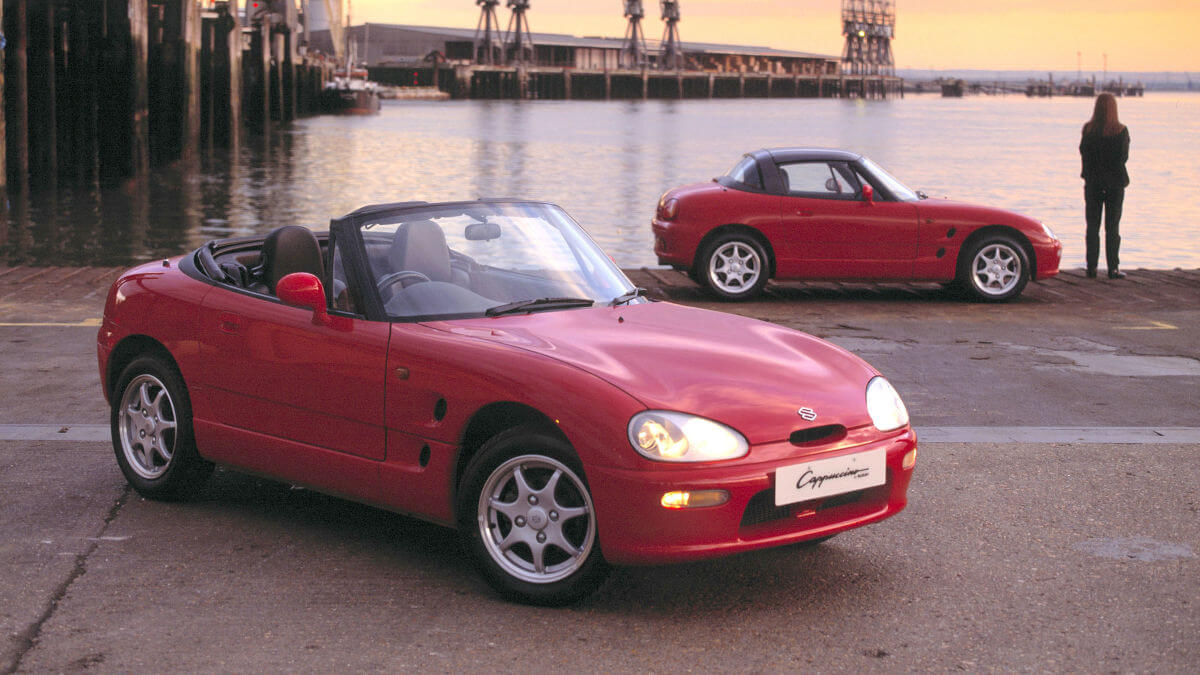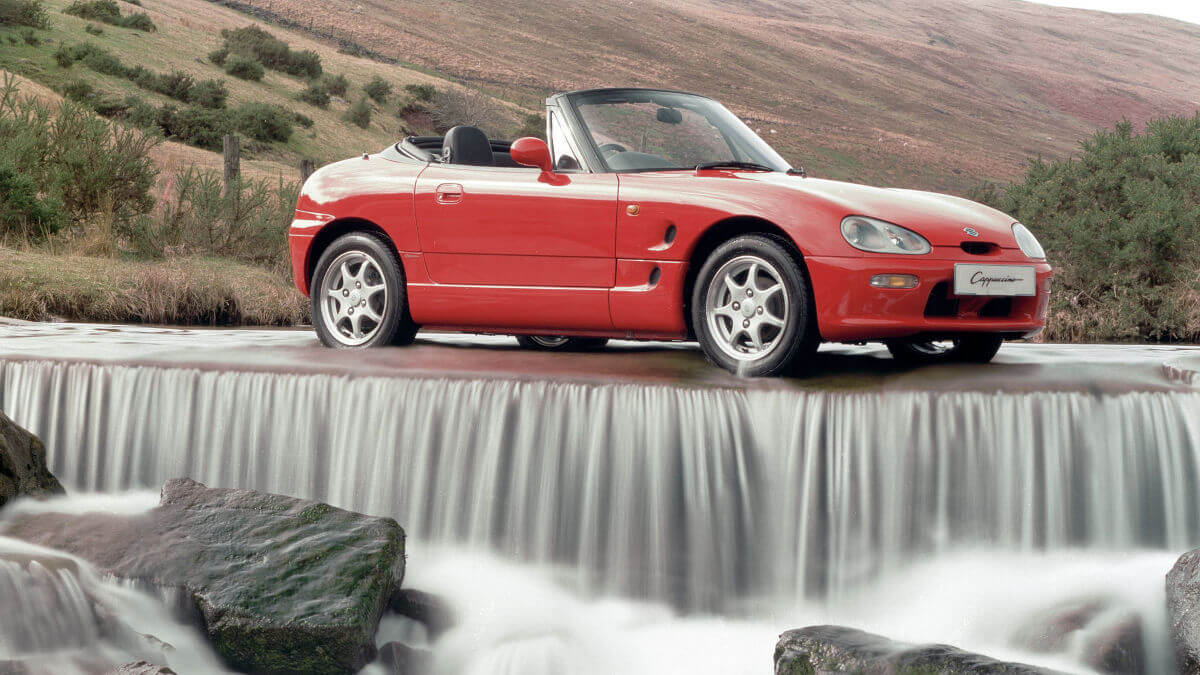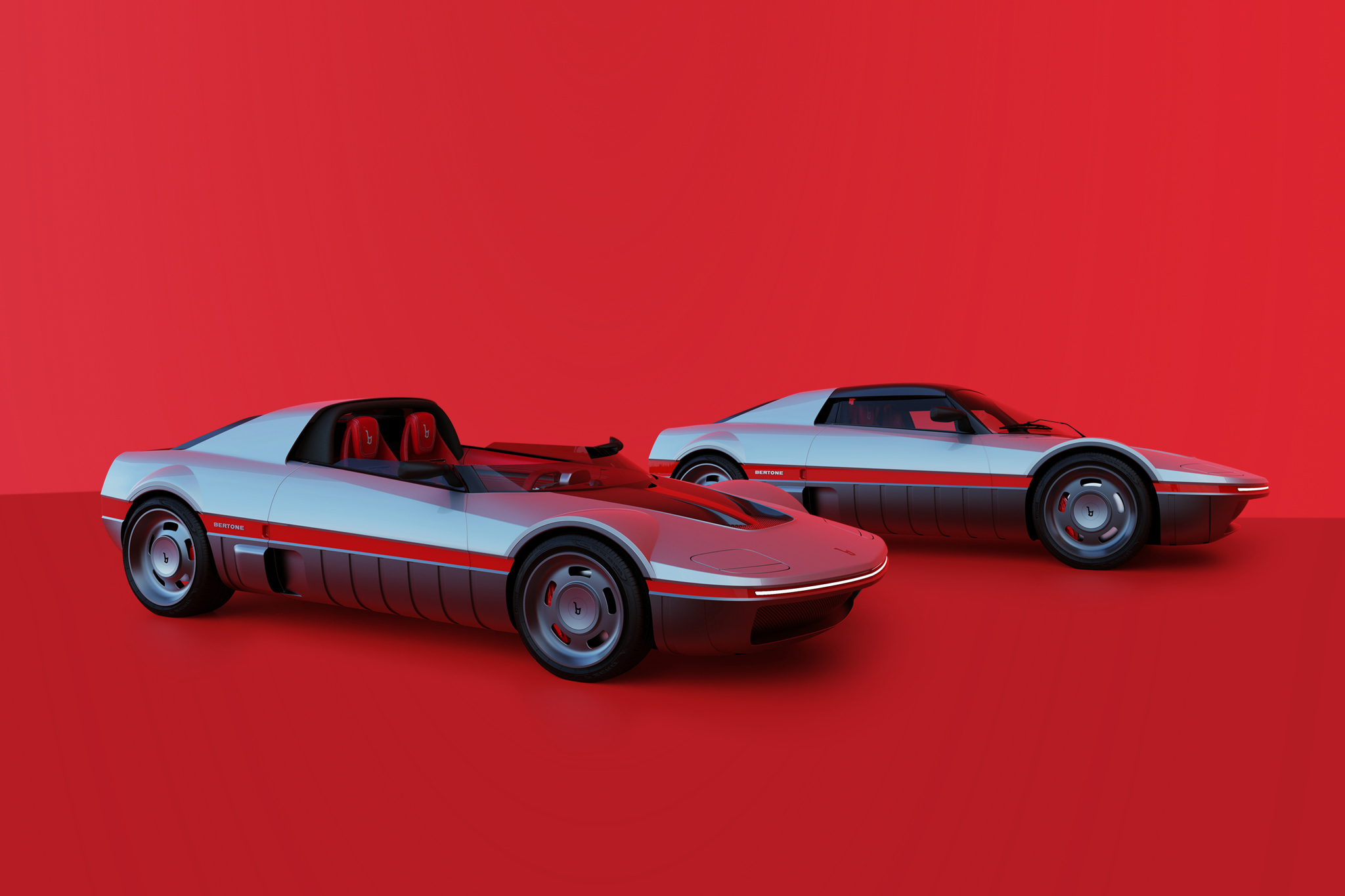Suzuki Cappuccino
Every car fan surely has at least one dream car. Usually these are supercars or luxurious noble vehicles. In my childhood, however, there was one vehicle that didn’t live up to these expectations. Nevertheless, I saw myself sitting behind the steering wheel and exploring the ideal lines of winding country roads. There were only two obstacles: I was still too young, and the vehicle in question never made it to Germany. Wait, not quite right. In fact, 120 examples did make it here. However, it was finally decided against importing them on a grand scale. Apparently, the time wasn’t yet ripe for a compact roadster in this country. The situation was different in Japan, where the Honda Beat, the Autozam AZ-1 and the Daihatsu Leeza Spyder were joined by the car we are talking about here. The Suzuki Cappuccino first appeared as a concept car at the Tokyo Motor Show in 1989.
Production version was 10 cm longer
Compared to the later production version, the concept car was around ten centimeters shorter. On the other hand, the basic design language and the roof concept already corresponded to the series production car. The small two-seater roadster had a 4-in-1 roof that could be used closed, completely open, as a targa or with a T-bar. This central longitudinal bar attaches the two hard roof halves. The rear roof section with the rear window can be retracted. Roof, rollbar, engine hood and front carrier are made of aluminium. Due to its small dimensions of 3,295 millimeters in length, 1,395 millimeters in width and 1,185 millimeters in height, the Cappuccino corresponded to the tax-privileged Kei-Car class in Japan. Fittingly, a three-cylinder turbocharged engine with 657 cc worked under the hood, initially with the designation F6A, later as K6A. With its 47 kW/64 hp, it drove the rear wheels either via a five-speed manual transmission or (on the K6A) an optional three-speed automatic.










1992 for the first time in Europe
Internally, the Cappuccino was given the abbreviations SX306 and EA11R. From October 1991, the compact car rolled off the production line at Suzuki’s Kosai plant. In the first two years alons, 15,114 units were built, of which 13,318 were delivered within Japan. At that time, negotiations were already underway between Suzuki and the official importer in Great Britain to export the Cappuccino there. To do this, the car had to be officially homologated for that market. For this, Suzuki worked closely with the importer in the UK. The car was shown in Europe for the first time at the British International Motor Show in Birmingham in 1992. There, the Cappuccino received two design awards from the Institute of British Carriage and Automobile Manufacturers (IBCAM). However, it took until October 1993 before the two-seater enriched the vehicle class under £ 20,000 (the price in the UK was only £ 11,995).
Only 1,500 cars for Europe
Originally, 1,500 examples were to be sent to the United Kingdom by 1995. However, there were strict import quotas on Japanese goods, so the number was reduced to 1,182. Of these, 1,100 actually remained in the country. The remaining 390 cars were distributed among Suzuki importers in Germany (the 120 cars mentioned above), France, Sweden and the Netherlands. Due to stricter emission regulations within the EU, all cars had to be registered until September 30, 1995. Although the Cappuccino received the modified K6A engine with chain-driven camshaft in Japan, it wasn’t worthwhile to re-register it in Europe due to the small numbers sold over here. The Japanese version now had power steering, as well as in some versions ABS, a driver’s airbag, a limited-slip differential and electrically adjustable exterior mirrors. After production ceased in 1998, there was no successor. Today, the few European vehicles are worth between € 5,000 and € 15,000. A cappuccino on that for now.
Images: Suzuki




